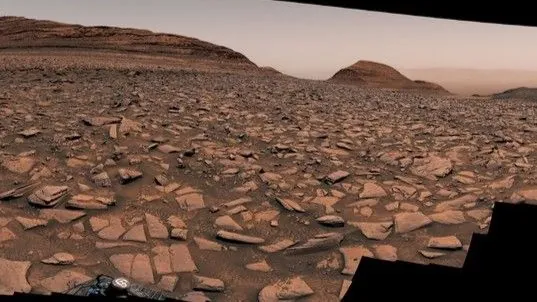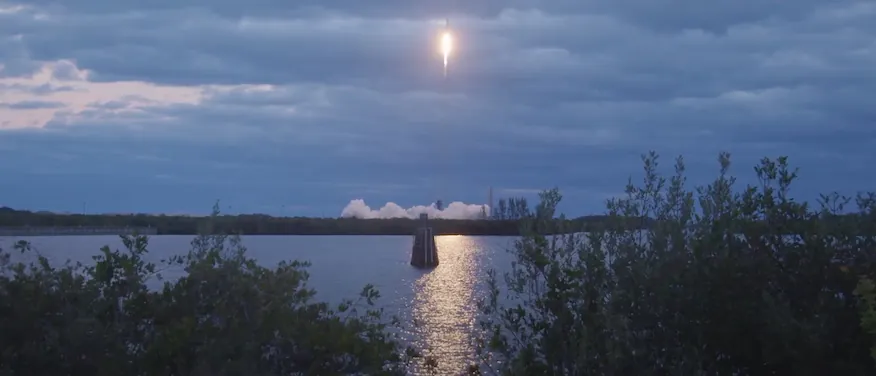
NASA's Curiosity Rover Unveils Stunning 360-Degree Martian Panorama and Discovers Mysterious Sulfur Stones!
2024-11-21
Author: Wai
Exploration Overview
After over a decade of exploration, NASA's Curiosity rover continues to mesmerize with groundbreaking discoveries on Mars. Since it first landed in 2012, the rover has paved its way across the planet's rocky terrain, returning valuable pictures and data that have helped decode the enigmatic Martian landscape.
Journey Up Mount Sharp
Curiosity has been on an impressive journey up the slopes of Mount Sharp—officially known as Aeolis Mons—since 2014. This mountain, rich in geological history, is intertwined with features like the Gediz Vallis channel—a potential relic of ancient river activity, first noted by scientists back in the 1970s.
Breathtaking 360-Degree Panorama
Earlier this year, Curiosity ventured into the Gediz Vallis channel, and in an electrifying reveal, NASA's Jet Propulsion Laboratory (JPL) has just published a breathtaking 360-degree panorama of this intriguing area. You can now virtually explore this alien terrain with an interactive video that allows you to rotate the view on your phone or desktop, getting up close and personal with the Martian features!
Recognizable Martian Landmarks
The spectacular panorama showcases recognizable Martian landmarks surrounding the Gediz Vallis, including Kukenán Butte, Pinnacle Ridge, and Texoli Butte. In the distance, you can even catch a glimpse of the Gale Crater Rim.
Discovery of Sulfur Stones
But perhaps the most astonishing aspect of Curiosity's recent findings is the discovery of peculiar white sulfur stones within the channel. These stones have piqued the interest of scientists, especially after Curiosity cracked one open to reveal striking yellow sulfur crystals inside. Unlike on Earth, where sulfur is primarily associated with volcanic activity and hot springs, the origin of these minerals on Mars remains a mystery, as no such geological processes have been identified on the Red Planet.
Scientific Insights and Future Directions
"We examined the sulfur field from different angles, looking for any associations that could provide clues about their formation," stated Ashwin Vasavada, Curiosity's project scientist. "We've amassed significant data, and now we face an intriguing puzzle."
Despite enduring harsh conditions, Curiosity remains operational and continues its mission. The rover is now headed toward a fascinating formation known as "the boxwork," characterized by its unique weblike patterns. First spotted by NASA’s Mars Reconnaissance Orbiter in 2006, the boxwork extends between six to twelve miles and may consist of minerals that have migrated through fractures in the mountainous terrain, possibly indicating past water presence.
Kirsten Siebach, a scientist working on Curiosity, indicated the significance of this investigation: "These ridges may harbor minerals that crystallized in a warmer, subsurface environment enriched with salty liquid water. Such conditions could have supported early microbial life on Earth, making this an exciting area for exploration.”
Looking Ahead
With Curiosity now charting a course to study the boxwork, JPL scientists eagerly anticipate using the recently gathered data to piece together the geologic history of the Gediz Vallis channel. As they begin to synthesize findings into a coherent timeline, the excitement surrounding each new revelation emphasizes the continued allure and potential discoveries that Mars may still hold.
Stay tuned for more updates as Curiosity delves deeper into the Martian mysteries—will we uncover the secrets of sulfur on the Red Planet?




 Brasil (PT)
Brasil (PT)
 Canada (EN)
Canada (EN)
 Chile (ES)
Chile (ES)
 España (ES)
España (ES)
 France (FR)
France (FR)
 Hong Kong (EN)
Hong Kong (EN)
 Italia (IT)
Italia (IT)
 日本 (JA)
日本 (JA)
 Magyarország (HU)
Magyarország (HU)
 Norge (NO)
Norge (NO)
 Polska (PL)
Polska (PL)
 Schweiz (DE)
Schweiz (DE)
 Singapore (EN)
Singapore (EN)
 Sverige (SV)
Sverige (SV)
 Suomi (FI)
Suomi (FI)
 Türkiye (TR)
Türkiye (TR)